Quick answer: I’d recommend the Philips 4300 LatteGo if you want a super-automatic espresso machine with an automatic milk frother under $1,000.
It’s the only super-automatic espresso machine in this price range that comes with a TFT display screen control panel and an automatic milk frother.
In this Philips 4300 LatteGo review, I put the machine through its paces to see whether it is indeed a bargain or whether Philips has cut important corners to create such a feature-rich machine for so cheap.
Let’s get started.
Should I Buy the Philips 4300 LatteGo?
I would only recommend buying the Philips 4300 LatteGo if all of the following apply to you:
You primarily drink milk-based beverages (cappuccinos, lattes, etc.).
You want a super-automatic machine with a milk frother (rather than a steam wand).
Your budget is capped at $1,000.
The Philips 4300 is the ideal machine for someone in this situation as it produces a nice milk foam and is the most user-friendly super-automatic machine available for under $1,000.
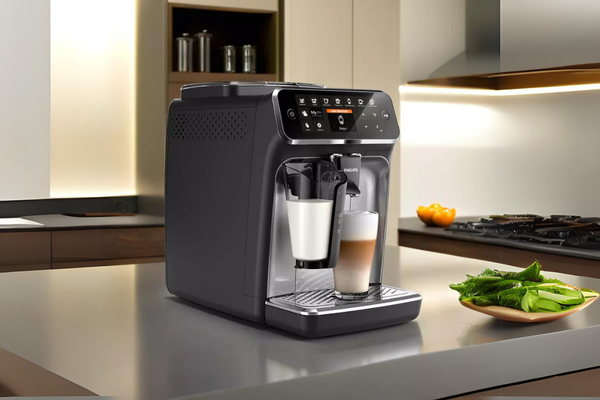
Philips 4300 LatteGo
Philips 4300 LatteGo delivers delicious, freshly ground coffee at the touch of a button
Overview: Performance Ratings
| Category | Rating | Comments |
|---|---|---|
| Espresso Quality | ★★★☆☆ (5/10) | Decent, but lacks body compared to Delonghi models. |
| Milk Frothing Performance | ★★★★☆ (7/10) | Thick, consistent froth, but lacks variety in texture. |
| Ease of Use | ★★★★★ (9/10) | User-friendly, intuitive controls with a TFT display. |
| Ease of Cleaning | ★★★★★ (10/10) | Dishwasher-safe parts and no messy milk tubes. |
| Design & Durability | ★★★☆☆ (6/10) | Plasticky build, concerns about long-term durability. |
| Value for Money | ★★★★☆ (8/10) | Great features at an affordable price. |
If you are buying a machine primarily to make plain espresso with, then the Delonghi Magnifica Evo is a better choice at the same price point as the Philips 4300.
Delonghi super-automatic espresso machines make better-tasting espresso than Philips’ ones due to Delonghi using a higher quality internal brewing unit than Philips.
This is the main reason why Philips’s super automatics tend to be cheaper than Delonghi’s.
However, if you are primarily going to be drinking milk drinks then you probably won’t notice this difference in espresso quality, so you’d get better value with a Philips machine.

REASONS TO BUY
- It’s the easiest super automatic espresso machine to keep clean and well-maintained.
- Easily allows you to adjust your drink’s strength and size.
- It has a very intuitive control panel that walks you through every aspect of using your machine through language rather than vague symbols.
REASONS TO AVOID
- Its espresso isn’t as good as Delonghi or Jura super automatics.
- Condensation forms in the bypass doser chute, making it prone to clogging.
- Its drip tray has sharp edges.
Philips 4300 LatteGo: Key Features
| Specification | Philips 4300 LatteGo |
| Description | Super-automatic espresso machine with milk frother |
| Milk System | Detachable milk carafe |
| User Interface | Button-controlled LCD display screen |
| No. of black drinks on menu | 5 |
| No. of milk drinks on menu | 3 |
| Strength settings (per drink) | 5 |
| Size settings (per drink) | 5 |
| Milk size settings (per drink) | 5 |
| Double shot function | Yes |
| User profiles | 2 plus guest profile |
| Grinder type | Ceramic flat burr grinder |
| Number of grind size settings | 12 |
| Cup clearance | 3.3″ – 7.0″ |
| Dimensions (width x depth x height) | 9.7″ x 17.0″ x 14.6″ |
User Interface
The Philips LCD display screen control panel is one of the machine’s highlights. It makes the machine much easier to use than similarly priced Delonghi machines.
The Philips 4300 LatteGo is controlled by a button-operated TFT touchscreen.

This makes the machine easier to use than one with a touch screen (and much easier to use than one with buttons only).
IPhones have made all other touch screens seem terrible in comparison, so a button-controlled screen is preferable to a touch screen on an espresso machine.
It’s far easier to press the wrong button with the Delonghi Dinamica Plus’s touch screen than with the Philips 4300’s buttons, for example.
It’s very easy to customize your drink’s strength and size with this machine. Just use the arrows to bump things up or down a few milliliters.
The machine has two user profiles; your customizations automatically save as the default for whatever user profile you’re on.
Available Drinks
The Philips 4300 can make eight coffee drinks. I’ll run through them now:
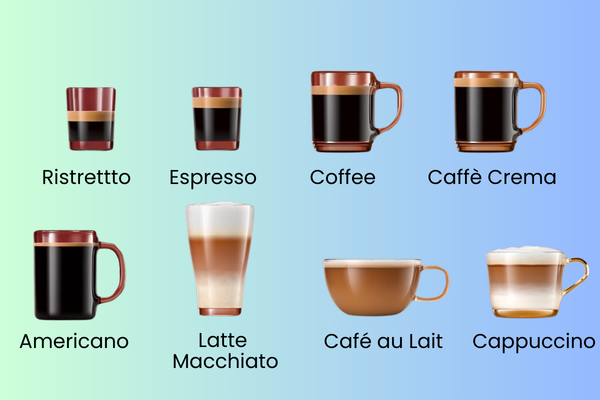
1. Espresso
- Rating: ⭐⭐⭐ 5/10
- Taste: Decent but lacks body—feels a bit watery. Comparable to a Moka pot, better than Nespresso, but not as good as Delonghi’s espresso.
- Pro Tip: Use maximum strength and the finest grind setting for the best results.
2. Coffee
- Rating: ⭐⭐⭐⭐ 8/10
- Taste: Surprisingly strong and flavorful. Comparable to a high-quality automatic pour-over and miles ahead of a Keurig.
- Default Size: 6 oz (180 ml).
3. Americano
- Rating: ⭐⭐ 4/10
- Taste: Standard Americano (espresso with water), but falls short compared to the machine’s coffee option. It lacks the richness you’d expect.
4. Cappuccino
- Rating: ⭐⭐⭐ 6/10
- Taste: Good, but requires a light stir. The machine froths milk to a thick texture, which tends to sit on top of the espresso. Be careful not to over-stir, as the milk might lose its frothy texture.
5. Latte Macchiato
- Rating: ⭐⭐⭐⭐ 8/10
- Taste: Excellent layering and balance between milk and coffee. The default uses a lot of milk, but this can be adjusted to taste.
6. Cafe Au Lait
- Rating: ⭐⭐⭐⭐ 7/10
- Taste: A mix of brewed coffee and steamed milk. Better than the cappuccino but not as impressive as the latte macchiato. Stirring diminishes the milk’s texture slightly.
7. Cafe Crema
- Rating: ⭐⭐⭐ 5/10
- Taste: A hybrid of espresso and hot water, similar to an Americano but slightly better. The light brown color of the liquid hints at a milder brew.
8. Ristretto
- Rating: ⭐⭐⭐ 5/10
- Taste: A concentrated espresso shot with a slightly dull flavor. Comparable to espresso but smaller and more intense.
Key Takeaways:
- The best drinks: Coffee and Latte Macchiato.
- Decent options: Cappuccino, Espresso, and Cafe Au Lait.
- Drinks to skip: Americano, Cafe Crema, and Ristretto.
This lineup makes the Philips 4300 LatteGo ideal for milk-based drinks, but plain espresso fans might want to look elsewhere.
Drink Customizations
The Philips LatteGo 4300 lets you customize your drink’s strength and size. If you’re brewing a black drink, then you have the option of making a double, and if it’s a milk drink, then you can customize the amount of milk in it.
You can pick one of five strength and size settings for each menu item.

These sizes vary for each drink. For example, a coffee’s default size will be bigger, and there will be bigger changes between each size option than with an espresso.
I really like how these customizations work.
It’s much easier to just bump up your drink’s strength and size on the fly than having to put the machine into a special “customize mode.” to hard code all your drinks (Delonghi super automatics tend to make you do that).
Once you customize a menu item, it will save as the default for whatever user profile you’re on (the machine has two user profiles plus a guest mode which will not save any changes).
LatteGo Milk System
The Philips LatteGo milk system is a carafe that attaches to the machine. It’s much easier to keep clean than any other super automatic milk frother.
The machine’s carafe is quite small; it will need to be refilled after every latte macchiato or after every two cappuccinos you make.
It will only steam your milk to one texture. This makes all your milk drinks quite similar.
If you want to drink a lot of different milk drinks, then I’d recommend the Dinamica Plus over the Philips 4300 (it’s around twice the price of the Philips 4300, however).
The best thing about the LatteGo milk frother is how easy it is to clean.
The frother comes apart into three pieces which you can then put in the dishwasher.
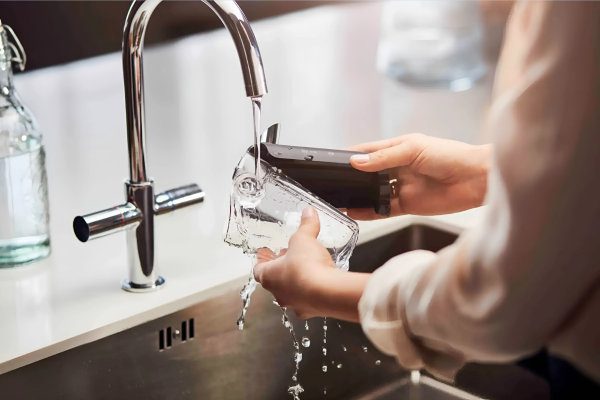
I LOVE that it doesn’t use a rubber hose (it’s the only milk frother I know of that doesn’t use this). Rubber hoses cause milk to drip everywhere and need to be cleaned very carefully by hand.
The Philips’s lack of a rubber hose alone makes it easier to keep clean than any Delonghi or Jura super-automatic espresso machine with a milk frother.
One small criticism I have of the milk carafe is that its lid just sits on top of the carafe rather than attaching to it with a hinge. This makes it quite easy to accidentally knock the lid off the carafe when you detach it from the machine.
Grinder
The Philips 4300 has a ceramic flat burr grinder with 12 grind size settings. While the grinder itself is perfectly fine, I am a bit concerned about how steam seems to rise up through the grind chute when it brews.
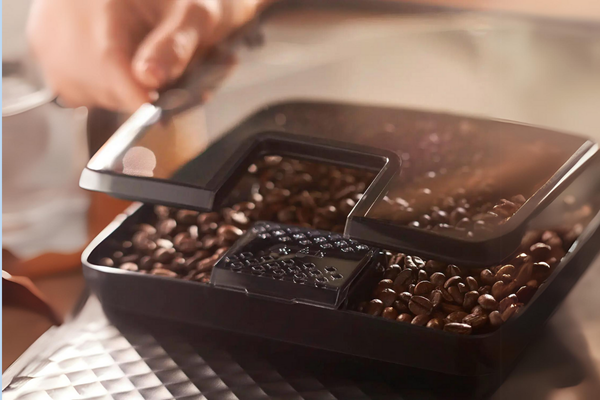
I found that the machine’s lowest settings (1-3) produce the best-tasting coffee.
You can change the grinder by pushing and turning a plastic dial. However, there’s no obvious indicator telling you what setting you’re currently on which is annoying.
My bigger concern with the grinder is how steam appears to rise up through the grinder’s chute when you brew. You can see this by the condensation that forms on the grinder’s lid.
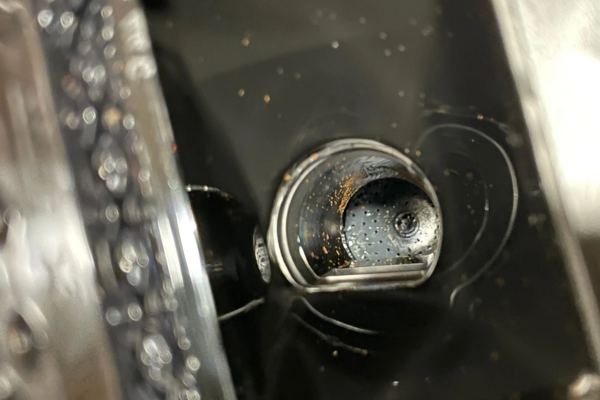
I can see this moisture causing the grinder (and especially the bypass doser) to clog up. The machine’s grinder is not removable, so there’s no obvious fix if this happens.
In fairness, this has not actually happened to me, nor could I find any reports online of other people experiencing this, but it is still a concern.
Rinsing and Cleanings
The machine has dedicated rinse and clean functions, which you can access in the settings section of its menu.
This includes a “quick rinse” and a brew group clean.
I like the fact that you have to manually tell the machine to run a rinse cycle, rather than this happening automatically after you brew.
Delonghi and Jura super automatics rinse automatically after you make a coffee, this can flood your drip tray if you forget to put a second cup under its spout after you brew (this has happened to me countless times).
The only manual cleaning you need to do is empty its drip tray and used coffee container (these parts aren’t dishwasher safe).
Drip Tray
The Philips 4300 LatteGo’s drip tray has a lot of sharp plastic edges. Its float is completely useless.
I don’t enjoy removing and taking apart the machine’s drip tray. It’s made out of plastic with sharp edges. This is especially true of the piece that covers its water tank.
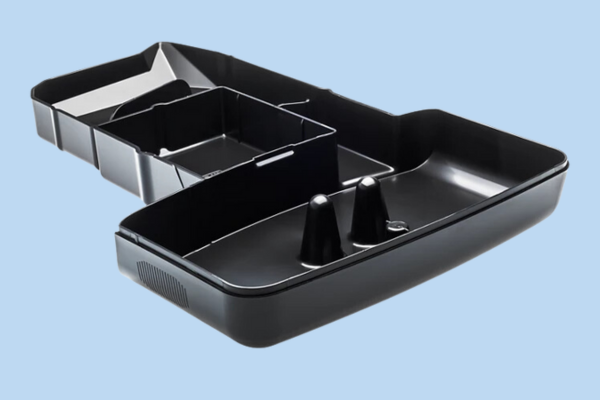
Although the drip tray has an indicator float, this doesn’t actually move up when it’s full.
Useless.
I do like how much clearance the machine has between the top of its drip tray and the bottom of its spout. This gives you enough room to brew into most travel cups.
Water Tank
The Philips 4300 has a water tank that pulls out from the front. Its filter means that it can brew around 5000 coffees before you need to descale it.
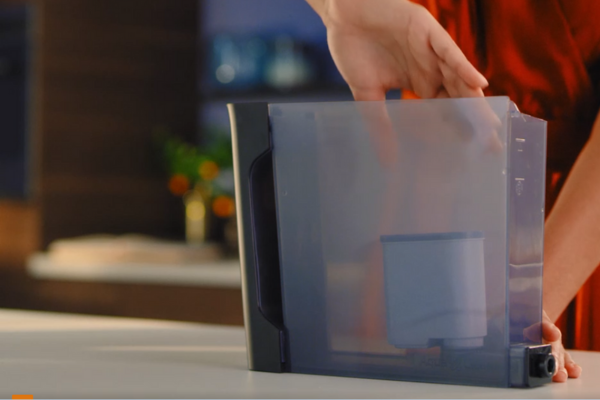
I like how its water tank is open from the top. This makes it easy to clean and quick to dry.
Removable Brewing Unit
You can remove the machine’s brew group to clean and lubricate it manually.
Although the machine has a dedicated brew group cleaning function, being able to actually take out and lubricate the brewing unit should increase your machine’s lifespan.
It even comes with a tube of lubricant to do this with.
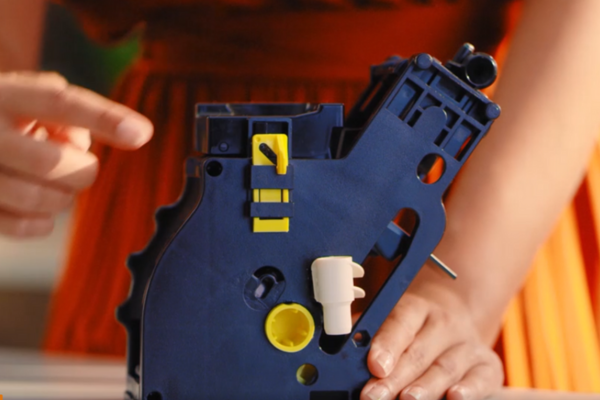
Now that I’ve run through the Philips 4300 LatteGo’s features, I’m going to assess the machine across the following criteria:
Espresso quality
Milk steaming performance
User-friendliness
Ease of cleaning
Design and durability
Value for money
Espresso Quality
Espresso Rating: ⭐⭐⭐ 5/10
The Philips 4300 LatteGo produces average espresso. Its drip-style coffee is good though.
All Philips super-automatic espresso machines’ espresso is weak-tasting and watery because they use a brew basket with relatively large holes in it.
These large holes mean that water passes through your coffee puck too quickly for extraction to occur. This results in a thin and dull-tasting espresso shot.
Espresso should be brewed for around 30 seconds, but the Philips 4300 typically brews your espresso in 15 seconds.
The machine’s drip-style coffee is better than its espresso.
It brews drip-style coffee in several stages, so the machine essentially throttles the brewing process. This makes up for the lack of resistance in its brew basket as the machine brews more slowly, to begin with.
Milk Steaming Performance
Milk Steaming Rating: ⭐⭐⭐⭐ 7/10
The Philips 4300 LatteGo produces decent enough milk foam but doesn’t give you any control over your milk’s texture.
The LatteGo milk system produces a particularly thick milk foam. This is the only milk texture that the machine can produce.
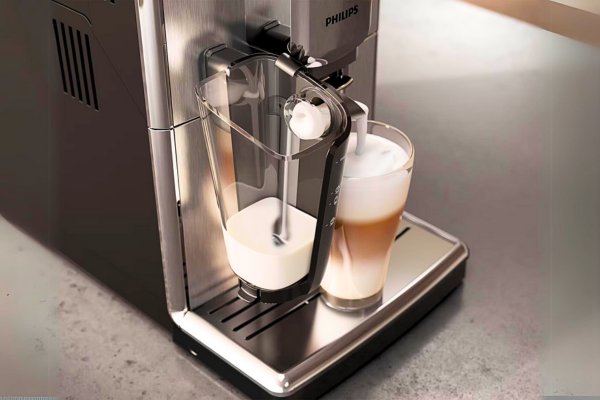
While its milk drinks are perfectly passable, this lack of texture settings means that all its milk drinks are quite same-y.
You’ll get a better variation in milk drinks if you go for a machine that has texture settings. The Delonghi Eletta Explore is your best option if you want this.
User-Friendliness
Ease of Use Rating: ⭐⭐⭐⭐⭐ 9/10
The Philips 4300 is one of the easiest super automatics to use.
The machine’s display screen walks you through every aspect of using your machine in plain English – this includes running rinse and descaling cycles.
I particularly like how easy the machine makes customizing your drinks’ strength and size and how you can cancel out any selected drink at just the press of a button. This has stopped me from overflowing my cup on more than one occasion.
Ease of Cleaning
Ease of Cleaning Rating: ⭐⭐⭐⭐⭐ 10/10
The Philips 4300 Lattego’s lack of any rubber milk tubes and not going into rinse cycles seemingly at random makes it the easiest super-automatic espresso machine to keep clean.
The two biggest causes of mess with super automatic espresso machines are:
- Rubber milk tubes: These inevitably drip milk all over your counter and build up sour milk crust on their inside. Because their holes are so small, it’s very hard to remove this sour milk crust (I often have to blow it out).
- Unexpected rinse cycles: Often super automatics will run a rinse cycle seemingly at random. This can flood your drip tray if you haven’t placed a cup under your spout in advance.
Fortunately, the Philips 4300 LatteGo does not have any rubber milk tubes and you need to manually tell it to run all its rinse cycles (other than on initial turn-on).
These two factors alone make the machine far easier to keep clean than any other super-automatic espresso machine.
The only parts of the machine you need to keep clean are its used ground coffee drawer and milk carafe. Both of these can go in the dishwasher.
Design and Durability
Design and Durability Rating: ⭐⭐⭐ 5/10
The Philips 4300 LatteGo is very plasticky and cheap feeling. I can’t see the machine lasting more than a handful of years.
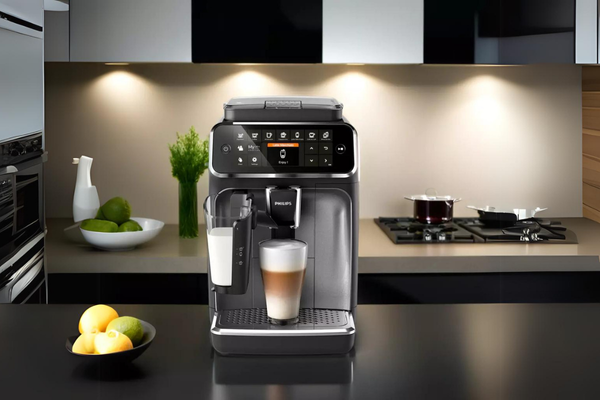
Touching its bean hopper and drip tray kind of reminds me of playing with a Happy Meal toy.
I specifically worry about the amount of steam I see rising out of the machine’s grinder and bypass doser when it brews. This amount of moisture surely makes the machine clogging up likely.
At least the machine can be opened up easily, this can help you to troubleshoot issues if they arise.
I see a lot of people complaining about Philips espresso machines (all models) being defective out of the box, and I’m not surprised if this happens pretty often.
The machine crams as many features as possible and cuts corners with its build quality.
I struggle to see the machine lasting more than a few years because of this. At least it comes with a two-year warranty.
Value for Money
Value for Money Rating: ⭐⭐⭐⭐ 8/10
The Philips 4300 LatteGo is a good deal if ease of use is important to you.
The machine’s combination of an excellently designed control panel and an overall design that makes cleanup as simple as possible makes it the most user-friendly super-automatic for under $1,000.
If an LCD display screen is not essential to you, then I might recommend a cheaper Philips unit than the 4300 (I’ll talk more about these other Philips models in just a second).
Philips 4300 LatteGo vs. Other Models
Philips produces four super-automatic espresso machines with LatteGo milk frothers.
These super automatics differ in the following ways:
- The number of drinks it has on its menu
- How far you can customize your coffee’s size and strength
- The machine’s control panel
- Its number of user profiles
- Its price
The table below shows how each Philips model fares in these criteria. The machines are listed from most affordable to most expensive.
| Model | Black Drinks | Milk Drinks | Interface | User Profiles | Price |
|---|---|---|---|---|---|
| Philips 2200 LatteGo | 2 | 1 | Buttons only | None | ~$499 |
| Philips 3200 LatteGo | 3 | 2 | Buttons only | None | ~$799 |
| Philips 4300 LatteGo | 5 | 3 | TFT Screen & Buttons | 2 | $999 |
| Philips 5400 LatteGo | 7 | 5 | TFT Screen & Buttons | 4 | ~$1,299 |
I personally think that the Philips 3200 LatteGo and Philips 4300 LatteGo offer you the best value for money.
Further read: Philips 3200 vs 4300
Both machines have the latte macchiato (the machine’s best drink). Go for the 3200 if you’re not bothered about a TFT screen user interface and the 4300 if you’re willing to pay a bit extra to have one.
For more information on Philips espresso machines please see my Philips 3200 review and Philips 5400 review.
Philips 4300 LatteGo vs Delonghi Magnifica Evo
I’d recommend the Philips 4300 LatteGo over the Delonghi Magnifica Evo if you primarily drink milk drinks, and the Delonghi Magnifica Evo over the Philips 4300 LatteGo if you primarily drink plain espresso.
As I mentioned earlier, Delonghi super-automatic espresso machines produce better-tasting espresso than Philips ones because they use a better-quality brew basket.
The downside of the Delonghi Magnifica Evo is that it’s harder to customize your drink than the Philips 4300. The Magnifica Evo’s milk frother also uses a rubber hose which is a pain to keep clean.
I’d therefore only recommend the Delonghi Magnifica Evo over the Philips 4300 LatteGo if you will primarily drink plain espresso.

Philips 4300 LatteGo
Best for Plain Espresso Drinkers. The Delonghi Magnifica Evo makes a better-tasting espresso than the Philips 4300. The two machines are similar in price.
Final Verdict
I recommend the Philips 4300 LatteGo if you want a sub-$1,000 super-automatic espresso machine to primarily make milk drinks with.
If you want to see what your other super automatic options are at this price point, then please see my roundup of the best super automatic espresso machines under $1,000.

